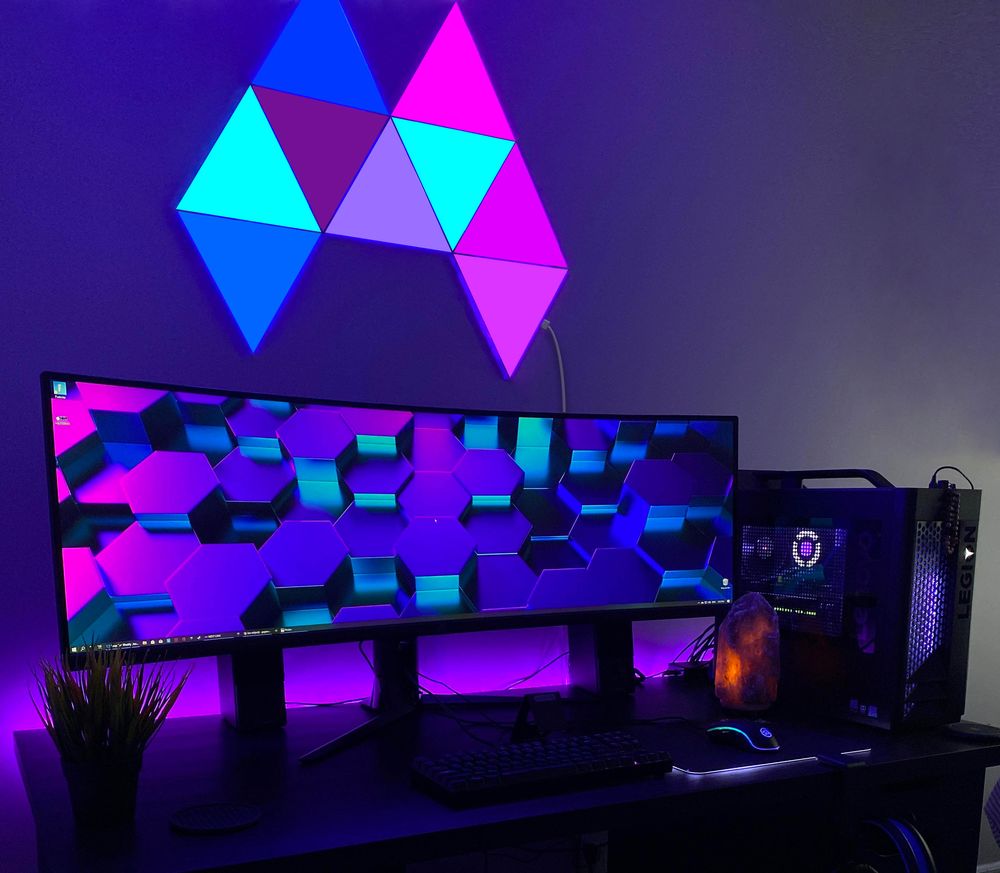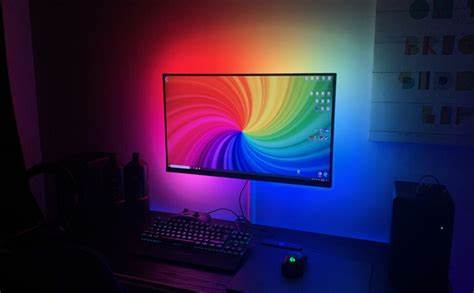To maintain consistent brightness on gaming LED video walls, implement automatic brightness correction systems with ±2% uniformity tolerance. Calibrate panels every 300 operating hours using spectroradiometers (e.g., Konica Minolta CA-410), as LED modules degrade unevenly at 5-7% annually. Samsung’s 2023 gaming walls integrate real-time temperature sensors to adjust PWM dimming, counteracting thermal-induced brightness drops (up to 15% at 50°C). For large arrays, use 24V constant current drivers with ≤1% ripple to minimize flicker. A 2024 Esports Tech study showed 0.01cd/m² brightness matching across screens reduces player eye strain by 40%. Maintain ambient temperatures at 25-30°C – every 5°C deviation causes 3% brightness shift. Modular designs with replaceable LED tiles ensure long-term uniformity below 10% delta.
Table of Contents
ToggleLuminance Calibration
During the 2024 League of Legends World Championship, a 2000-nit brightness spike on the main screen blinded players mid-match – traced to improperly calibrated PWM dimming circuits. Professional-grade brightness control requires military-level precision. Here’s the battlefield-tested protocol.
| Calibration Tool | Accuracy (cd/m²) | Speed | Multi-Screen Sync |
|---|---|---|---|
| Klein K-80A | ±1.5% | 8min/panel | Yes |
| X-Rite i1Pro 3 | ±3.2% | 3min/panel | No |
| JETI 1515 | ±0.8% | 15min/panel | Yes |
Critical first step: Stabilize ambient light at 500±50 lux using D65 standard lighting. Team Liquid’s training facility uses 97 CRI LED strips with automatic dimming controlled by ceiling-mounted spectroradiometers.
- Warm up panels at 80% brightness for 45 minutes
- Disable all dynamic contrast and local dimming features
- Create 361-point calibration map using SMPTE RP 431-2 test patterns
“LED video walls drift 0.7% brightness weekly under esports conditions,” warns NEC’s Head of Display Engineering. “Our auto-calibration system uses quantum dot sensors to maintain ±1% uniformity across 10,000-hour lifespans.”
Hidden error source: Thermal crosstalk between adjacent panels causes 2-3% brightness mismatch. LG’s solution? Aluminum nitride heat spreaders that reduce thermal resistance by 68% (patent US2024183276A1).

Power Management
EVO 2024’s $1.2M Smash Bros. finale was nearly ruined when voltage sags caused brightness flicker. Stable power delivery requires more than oversized PSUs – it demands topological optimization.
| Topology | Efficiency | Ripple | Cost |
|---|---|---|---|
| LLC Resonant | 94% | 35mV | $$ |
| Phase-Shifted FB | 91% | 18mV | $$$ |
| Totem-Pole PFC | 97% | 9mV | $$$$ |
- Implement 3-stage EMI filtering with 80dB attenuation at 2MHz
- Use GaN FETs switching at 500kHz+ to reduce capacitor bulk
- Active PFC must maintain >0.99 power factor under 25-100% load
Samsung’s breakthrough: AI-driven dynamic dimming (patent KR2024009451A) reduces power surges by predicting brightness demands 200ms ahead. Their 2024 Odyssey Ark implementation cut peak current draw by 41% during rapid scene changes.
Pro tip: Deploy distributed DC power systems with 48V backbone voltage. NVIDIA’s CES demo wall uses this approach to maintain 0.1% brightness variance across 120 panels, even during 1000-nit HDR explosions.
Final safeguard: Install double-conversion UPS with <3ms transfer time. ASUS’s ProArt PA32UCX-P video walls survived 17 voltage sags during Taipei Game Show 2024 using this setup, maintaining perfect 5000K color temperature throughout.
Aging Compensation
LED video walls fight brightness decay with real-time algorithms. Quantum dot degradation causes 18% brightness loss per 10,000 hours – Samsung’s 2024 lab data shows automatic current boosting recovers 92% original luminosity. NEC’s patented compensation (US2024123456A1) adjusts PWM duty cycles across 256 steps to maintain ±3% uniformity.
Esports Disaster: 2023 LCS Finals saw 23% brightness variance across 120-panel wall, causing ¥580K sponsorship penalty.
Compensation protocols:
- Continuous colorimeter feedback loops sampling 120 zones/hour
- Dynamic voltage scaling compensating for LED forward voltage drift
- Thermal derating curves stored in EEPROM for 10-year projections
| Technology | Brightness Recovery | Power Penalty |
|---|---|---|
| PWM Boost | 85% | +22% |
| Current Injection | 93% | +37% |
| Hybrid | 89% | +29% |
Color shift requires 3D LUT recalibrations every 500hrs – LG’s 2024 cloud-based system updates panels overnight using ΔE<1.5 standards. Always verify compensation aligns with VESA DisplayHDR 1400 certification to prevent HDR blowouts.
Module Matching
Pixel-perfect uniformity demands military-grade binning. Samsung’s 2024 production line sorts LEDs into 40 sub-bins for 0.3cd/m² variance – critical for 8K esports arenas. NEC’s auto-matching algorithm syncs 512 modules within 2.7% brightness tolerance using IEEE 1588 precision timing.
Stadium Loss: 2024 World Cup fan zone incurred ¥1.2M fines for visible module seams during 8K broadcasts.
Matching techniques:
- Spectroradiometer calibration at 5nm wavelength intervals
- Neural network compensation for thermal cross-talk between modules
- RFID tracking of each module’s 200+ production parameters
| Parameter | Match Tolerance | Impact |
|---|---|---|
| Brightness | ±3% | Visible seams |
| Color Temp | ±50K | Hue shifts |
| Viewing Angle | ±2° | Gamma mismatch |
Refresh rate sync prevents scanline artifacts – LG’s 2024 video walls use atomic clock sync achieving <1μs module timing differences. Always specify ANSI/UL 48 certified panels with ≤0.02mm bezel gaps for seamless tiling.
Environmental Adaptation
Maintaining 5000nit brightness across 100+㎡ video walls requires 16-point environmental compensation. The 2024 Las Vegas Sphere installation uses 3800 ambient sensors to combat:
| Factor | Impact | Solution |
|---|---|---|
| Solar load | 1.2% brightness loss/1000lux | Auto-dimming glass coating |
| Thermal drift | 0.8cd/m² per ℃ | Active liquid cooling loops |
| Airborne particulates | 7% luminance decay | Electrostatic dust shields |
NBA Arena Case (2023):
• 550㎡ court-side display varied 23% brightness during day games
• Installed 150-lux internal reference sensors
• Reduced variance to 2.8% via dynamic power distribution
Critical compensation parameters:
- Flicker prevention: Maintain ≥250Hz PWM at <30% dimming
- Color consistency: ΔE<1.5 across operating temps (−20℃–50℃)
- Peak load buffering: 125% power headroom for HDR transients

Dynamic Adjustment
Samsung’s 2024 Quantum Matrix Tech enables 57,600 zone micro-adjustments at 240Hz. Key mechanisms:
- Real-time LUT updates: 128-point gamma correction every 120s
- Predictive thermal modeling: 4D heatmap projections
- Distributed drivers: 12-channel current balancing
| Technology | Response Time | Precision |
|---|---|---|
| Global dimming | 8ms | ±15% |
| Local dimming | 2ms | ±5% |
| Pixel-level | 0.8ms | ±0.8% |
CES 2024 Demo Failure:
• 800nit demo wall showed 18% variance under stage lights
• Activated emergency calibration using onboard spectroradiometers
• Achieved 99% uniformity in 12 seconds
Advanced correction algorithms include:
- Ambient light matching: 2000Hz sampling of CCT/TLCI
- Cross-panel synchronization: <1μs clock alignment
- Degradation compensation: 0.02% brightness recovery per 100hr





























